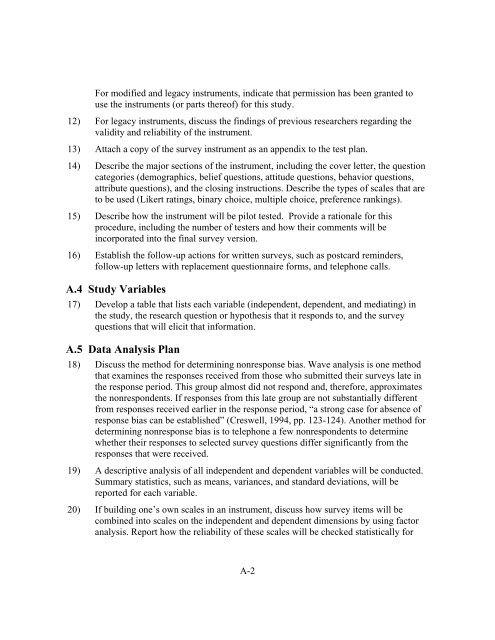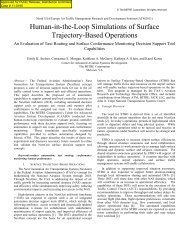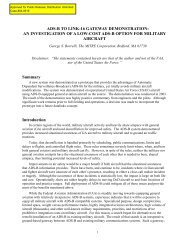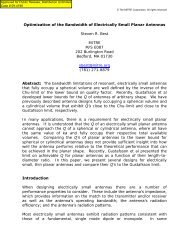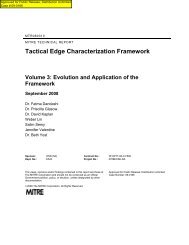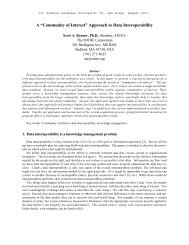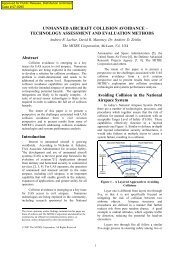Fundamentals of Survey Research Methodology - Mitre
Fundamentals of Survey Research Methodology - Mitre
Fundamentals of Survey Research Methodology - Mitre
You also want an ePaper? Increase the reach of your titles
YUMPU automatically turns print PDFs into web optimized ePapers that Google loves.
For modified and legacy instruments, indicate that permission has been granted to<br />
use the instruments (or parts there<strong>of</strong>) for this study.<br />
12) For legacy instruments, discuss the findings <strong>of</strong> previous researchers regarding the<br />
validity and reliability <strong>of</strong> the instrument.<br />
13) Attach a copy <strong>of</strong> the survey instrument as an appendix to the test plan.<br />
14) Describe the major sections <strong>of</strong> the instrument, including the cover letter, the question<br />
categories (demographics, belief questions, attitude questions, behavior questions,<br />
attribute questions), and the closing instructions. Describe the types <strong>of</strong> scales that are<br />
to be used (Likert ratings, binary choice, multiple choice, preference rankings).<br />
15) Describe how the instrument will be pilot tested. Provide a rationale for this<br />
procedure, including the number <strong>of</strong> testers and how their comments will be<br />
incorporated into the final survey version.<br />
16) Establish the follow-up actions for written surveys, such as postcard reminders,<br />
follow-up letters with replacement questionnaire forms, and telephone calls.<br />
A.4 Study Variables<br />
17) Develop a table that lists each variable (independent, dependent, and mediating) in<br />
the study, the research question or hypothesis that it responds to, and the survey<br />
questions that will elicit that information.<br />
A.5 Data Analysis Plan<br />
18) Discuss the method for determining nonresponse bias. Wave analysis is one method<br />
that examines the responses received from those who submitted their surveys late in<br />
the response period. This group almost did not respond and, therefore, approximates<br />
the nonrespondents. If responses from this late group are not substantially different<br />
from responses received earlier in the response period, “a strong case for absence <strong>of</strong><br />
response bias can be established” (Creswell, 1994, pp. 123-124). Another method for<br />
determining nonresponse bias is to telephone a few nonrespondents to determine<br />
whether their responses to selected survey questions differ significantly from the<br />
responses that were received.<br />
19) A descriptive analysis <strong>of</strong> all independent and dependent variables will be conducted.<br />
Summary statistics, such as means, variances, and standard deviations, will be<br />
reported for each variable.<br />
20) If building one’s own scales in an instrument, discuss how survey items will be<br />
combined into scales on the independent and dependent dimensions by using factor<br />
analysis. Report how the reliability <strong>of</strong> these scales will be checked statistically for<br />
A-2


